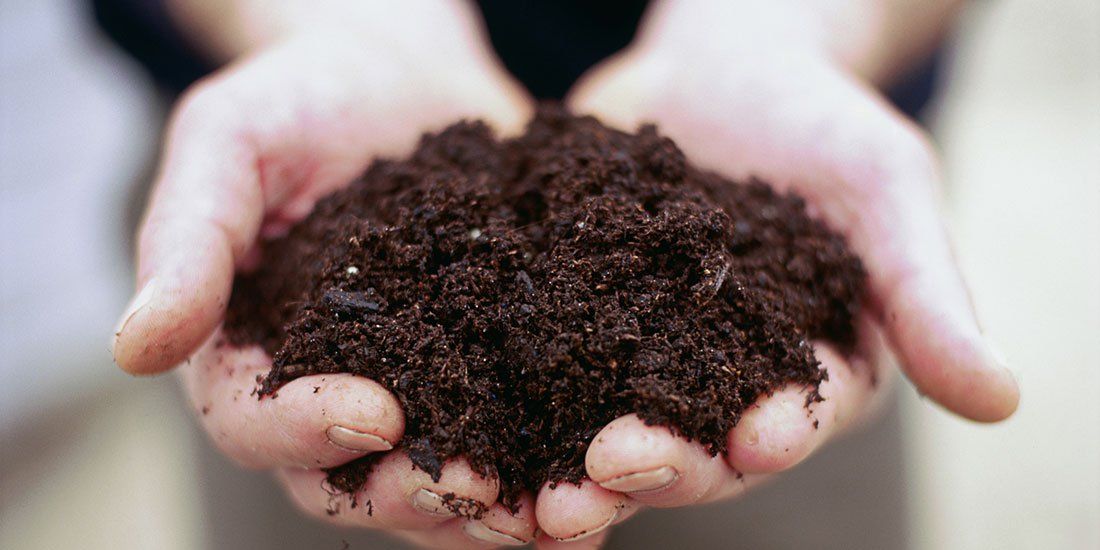Weathering takes place as rocks are broken down into progressively smaller pieces by the effects of weather. These pieces do not move to a new location, they simply break down, but remain next to one another.
A large chunk of bedrock many hundreds of feet long is broken down into smaller and smaller pieces, until finally there are many tens of thousands of small rocks. Often rocks are broken down so much that they become dirt.
Weathering is caused by water, as it freezes and thaws, as well as by chemical reactions that loosen the bonds holding rocks together.
Weathering is most common at the surface where exposed bedrock meets the atmosphere. However, weathering can extend many thousands of feet downward into the Earth’s crust, following cracks, fissures, and microscopic holes that allow water to penetrate.
Microscopic Spaces
Microscopic spaces between the grains of a rock are numerous. These spaces act like microscopic caves, allowing water to flow freely through them.
As water travels through these spaces, it causing weathering, as chemicals are carried with it that can loosen the bonds between grains, and help to break the rock into smaller pieces. In some cases, the rocks become so weak, that they can be crumbled with the force of a bare hand.
Joints And Erosion
Almost all rocks contain numerable joints. Joints are tiny hairline cracks that are not all the way broken through. Both sides of the rock are still held together with enough strength that they move together. However, they are broken apart sufficiently as to allow small amounts of water to easily travel between them.
Faults And Erosion
A fault is a crack in the bedrock where neither side is held together. As a result, both sides are free to move independently of one another. Faults are typically much larger than joints, and can span in some cases several hundred miles.
Faults are responsible for significant weathering. This is because of their size. They allow significant amounts of water to enter the bedrock.
Lava Vesicles and Erosion
As lava cools, bubbles of hot gas often form. These bubbles become suspended in the thickening lava and are unable to escape. As a result, the cooling lava is very porous, leaving very large spaces though which water can travel.
The Forces of Weathering
Water is an important force that greatly effects weathering, but it is not the only force. Other forces include the atmosphere, and even plant and animal life.
The atmosphere is comprised of many different types of gases. These gases are able to penetrate into the openings of rocks. Plant roots, microscopic animals and plants, and digging animals also help to break down rocks. To better understand the different forces that cause weathering, geologists separate them into three categories. These categories are mechanical, chemical, and biotic.
Mechanical Weathering
Mechanical weathering takes place when rocks are broken down without any change in the chemical nature of the rocks. The rocks are essentially torn apart by physical force, rather than by chemical breakdown.
The forces that break rocks down can be numerous, and include such things as pent up energy as the Earth’s crust slowly moves. When great amounts of pressure build up, the resulting mechanical effect can be that very large joints, or faults are created.
The most common type of mechanical weathering is the constant freezing, and thawing of water. In liquid form, water is able to penetrate the many holes, joints, and fissures within a rock. As the temperature drops below 32 ° F, this water freezes. As water freezes, it expands, becoming about 10% larger than it was in liquid form. The result is that the holes and cracks in rocks are pushed outward. Even the strongest rocks are no match for this force.
As the water thaws, it is then able to penetrate further into the widened space, where it later freezes yet again. The expansion of holes and cracks is very slow. However, water does not mind. It is very patient. Month after month, year after year, water freezes and thaws over and over, creating larger and larger holes and cracks in the rocks.
Another important type of mechanical weathering is salt wedging. As water enters the holes and cracks in the surface of rocks, it often carries salt with it. As the water later evaporates, the salt is left behind. Over time, these salt deposits build up, creating pressure that can cause rocks to split and weaken.
Temperature changes also effect mechanical weathering. As temperatures heat up, the rocks themselves expand somewhat. As the temperatures cool down, rocks contract slightly. The effect can be the weakening of the rock itself.
Chemical Weathering
Chemical weathering takes place in almost all types of rocks. Smaller rocks are more susceptible, however, because they have a greater amount of surface area.
Chemical reactions break down the bonds holding the rocks together, causing them to fall apart, forming smaller and smaller pieces. Chemical weathering is much more common in locations where there is a lot of water. This is because water is important to many of the chemical reactions that can take place. Warmer temperatures are also more friendly to chemical weathering. The most common types of chemical weathering are oxidation, hydrolysis and carbonation.
Oxidation takes place when oxygen combines with other elements in rocks to form new types of rock. These new substances are usually much softer, and thus easier for other forces to break apart.
Hydrolysis occurs when water combines with the substances in rocks to form new types of substances, which are softer than the original rock types. This allows other forces, such as mechanical weathering, to more easily break them apart.
Carbonation takes place when carbon dioxide reacts with certain types of rocks forming a solution that can easily be carried away by water.
Biotic Weathering
The word ‘bio’ means life. Thus biotic weathering is any type of weathering that is caused by living organisms. Most often the culprit of biotic weathering are plant roots. These roots can extend downward, deep into rock cracks in search of water, and nutrients. In the process they act as a wedge, widening and extending the cracks.
Other causes of biotic weathering are digging animals, microscopic plants and animals, algae and fungi.






